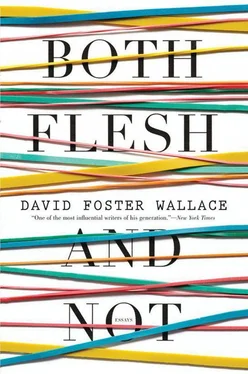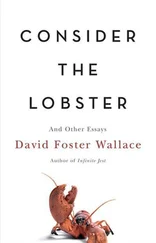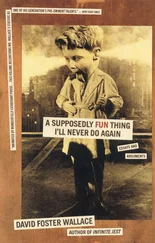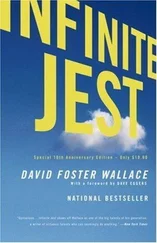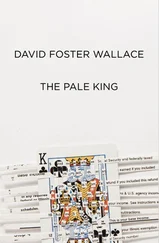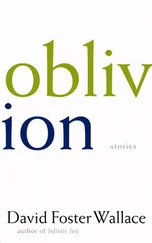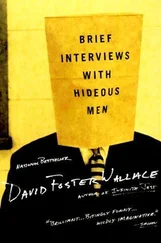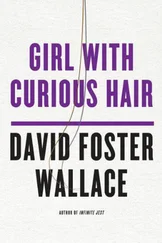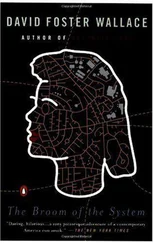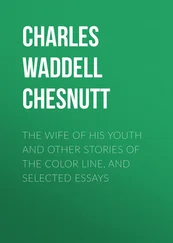To put it in a simpler, more book review-ish way: neither of these novels is very good (one, in fact, is downright bad); but the precise ways in which they’re not very good will vary directly with how much an individual reader already knows about the extraordinary field these two books are trying to dramatize. 7
Not just professional mathematicians, but just about anyone lucky enough ever to have studied higher math understands what a pity it is that most students never pursue the subject past its introductory levels and therefore know only the dry and brutal problem-solving of Calc I or Intro Stats (which is roughly analogous to halting one’s study of poetry at the level of grammar and syntax). Modern math is like a pyramid, and the broad fundament is often not fun. It is at the higher and apical levels of geometry, topology, analysis, number theory, and mathematical logic that the fun and profundity start, when the calculators and contextless formulae fall away and all that’s left are pencil & paper and what gets called “genius,” viz. the particular blend of reason and ecstatic creativity that characterizes what is best about the human mind. Those who’ve been privileged (or forced) to study it understand that the practice of higher mathematics is, in fact, an “art” 8and that it depends no less than other arts on inspiration, courage, toil, etc…. but with the added stricture that the “truths” the art of math tries to express are deductive, necessary, a priori truths, capable of both derivation and demonstration by logical proof. 9
It may be that mathematics is not generally recognized as one of the arts precisely because so much pyramidal training and practice is required in order to appreciate its aesthetics; math is perhaps the ultimate in acquired tastes. 10And it’s maybe because of math’s absolute, wholly abstract Truth that so many people still view the discipline as dry or passionless and its practitioners as asocial dweebs. Some readers of Science will probably know all too well the frustration of trying to describe the beauty and power of Gauss’s differential geometry or the Banach-Tarski Paradox to someone who remembers only the drudgery of factoring quadratic equations or the terror of a trig midterm. In fact, the weird fear and distaste that low-level math provokes in so many 11is part of what makes the emergence of the Math Melodrama exciting: if the genre can find ways to vivify pure math and communicate the discipline’s extraordinary beauty and passion to the average reader, 12both readers and math itself stand to gain.
The ways in which Schogt’s and Doxiadis’s novels go about trying to humanize and animate math are also kind of similar. Besides both struggling to solve classic problems in number theory (the actual Goldbach Conjecture in UPGC, in WN a fictitious conundrum called “Beauregard’s Wild Number Problem” 13), the books’ protagonists also both conceive of their projects almost wholly in terms of personal achievement, glory. WN ’s Isaac Swift, a once-promising student whose pro career has stagnated, spends much time fantasizing about solving the Wild Number Problem and having “an international symposium held in my honor… and, now that I was not just a mathematician, but a famous mathematician, women would suddenly find me attractive, not just eccentric or at best amusing.” And UPGC ’s Petros Papachristos, while already a number-theorist of substantial reputation who holds an endowed chair at U. Munich, nevertheless “sought in mathematics a great, almost transcendent success, a total triumph that would bring him world fame…. And to be complete, this triumph should be exclusively his own.” Despite their different stations and attainments, the two protagonists suffer almost identically (and at great length) from the insecurity of measuring themselves against their colleagues and the fear that someone else will solve “their” problem first (Petros actually rejoices when Srinivasa Ramanujan 14dies young of tuberculosis, simply because Ramanujan’s “unique intellect was the only force he considered capable of purloining his prize”). Both protagonists’ work is characterized as an anxious race against the clock and calendar; both novels make much of the fact that pure math is a “young man’s game” and that the vast majority of important mathematicians do their best work before thirty-five. 15And both heroes brood and expound at great length about the particular despair of being a good but not immortally great mathematician, i.e., a mathematician brilliant enough truly to appreciate the genius of Riemann, Euler, Poincaré, et al. but not brilliant enough to be their equal. As UPGC ’s Petros tells his nephew:
Take Hardy and Littlewood, top-class mathematicians both of them. They possibly made the Hall of Fame — a very large Hall of Fame, mind you — but even they did not get their statues erected at the grand entrance alongside Euclid, Archimedes, Newton, Euler, Gauss… That had been my only ambition and nothing short of the proof of Goldbach’s Conjecture, which also meant cracking the deeper mystery of the primes, could possibly have lead me there. [ sic ]
while WN ’s Isaac Swift, quite a bit lower on the academic food chain, carps to himself almost nonstop about being “well on your way to everlasting anonymity, never to be quoted and always to be seated somewhere at the back of a conference, assuming you manage to scrounge together the funds needed to attend in the first place,” etc.
Interestingly, though, the most important similarity between the novels concerns the rhetorical problems of audience mentioned supra, while the biggest differences between WN and UPGC concern the ways the two books try to handle those problems. Oddly, the better of the two novels is also the one that seems to be the most confused and confusing about just what its audience is.
The Wild Numbers, translated from the Dutch De wilde getallen and its locale moved from Amsterdam to some nameless U.S. college town, is not the better novel. It’s designed to be sort of a schlemiel-comedy à la Thurber’s “Mitty” or Amis’s Lucky Jim. WN ’s Isaac is a mediocrity who at the start of the novel is under-published and reduced to doing scutwork calculations and “refinements” for his superstar colleague Dimitri Arkanov 16and at age thirty-five goes around saying stuff like “I felt old and depressed. There seemed to be no more room for dreams at my age. Everything was measured in terms of success and failure…. I concluded that I was a lesser human being in every respect.” His prospects suddenly change when Isaac stumbles into working on “wild numbers,” which are described in the translation this way:
Beauregard had defined a number of deceptively simple operations, which, when applied to a whole number [integer?], at first resulted in fractions [rationals?]. But if the same steps were repeated often enough, the eventual outcome was once again a whole number [huh?]. Or, as Beauregard cheerfully observed: “In all numbers lurks a wild number, guaranteed to emerge when you provoke them long enough.” 0 yielded the wild number 11, 1 brought forth 67, 2 itself, 3 suddenly manifested itself as 4769, 4, surprisingly, brought forth 67 again.
In an all-nighter of migrainous epiphany, Swift comes to believe he’s found the long-sought answer to the Wild Number Problem, which is apparently a fictional variant of number-theoretic puzzles like the Twin Primes Problem 17: “How many wild numbers are there? Are there a finite number that keep coming up, and if so, how many, or are there an infinite number?” Isaac’s proof that the set of all wilds is infinite (a proof that somehow involves FN16’s K-reducibility and calibrator sets as well as what are called “tame” and “pseudo-wild numbers”) appears at first to be sound, and it is confirmed and lauded by Arkanov and submitted to a prestigious journal, catapulting Swift into the mathematical limelight and prompting all sorts of wacky plot-complications before it is finally discovered that the proof doesn’t work after all (but by which time Isaac’s found true love with a caustic divorcée who’s also had horrible career reverses, so everything works out OK in the end).
Читать дальше
